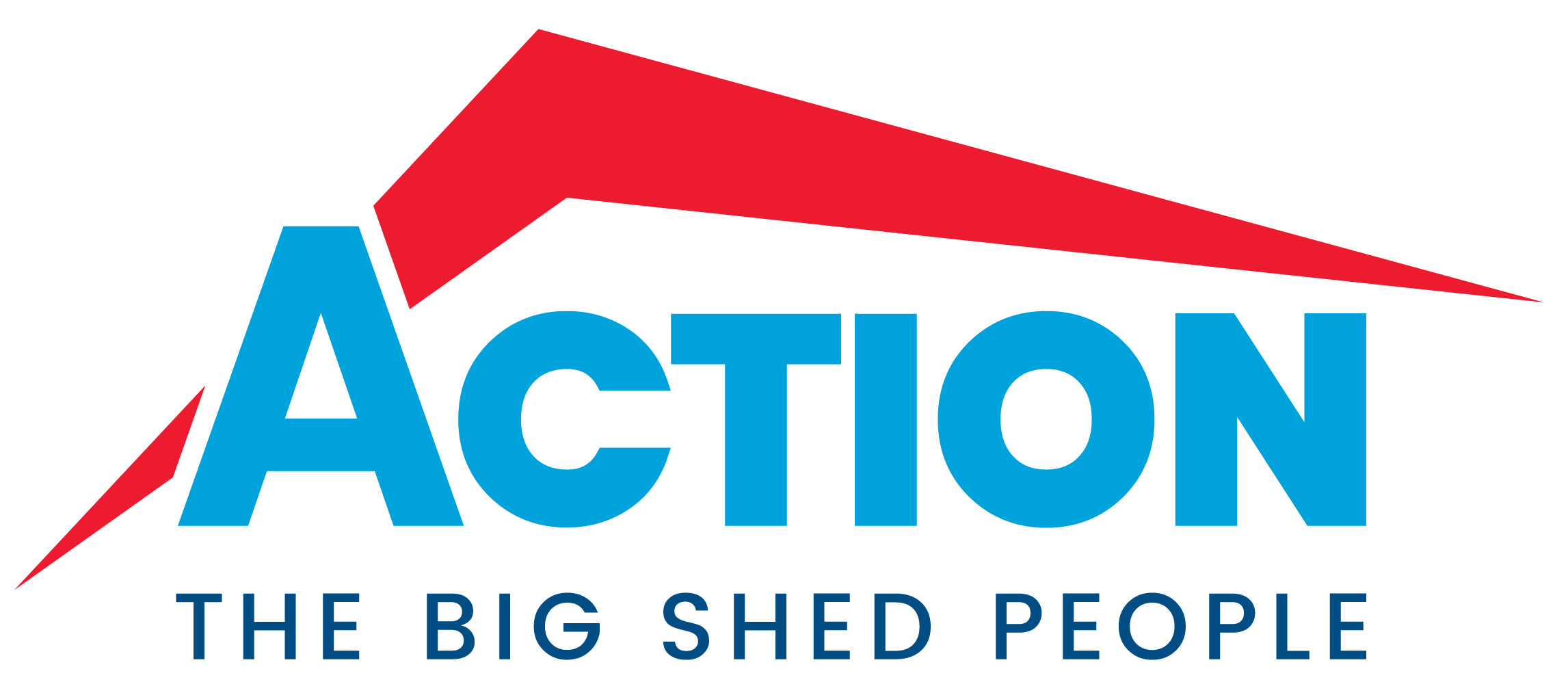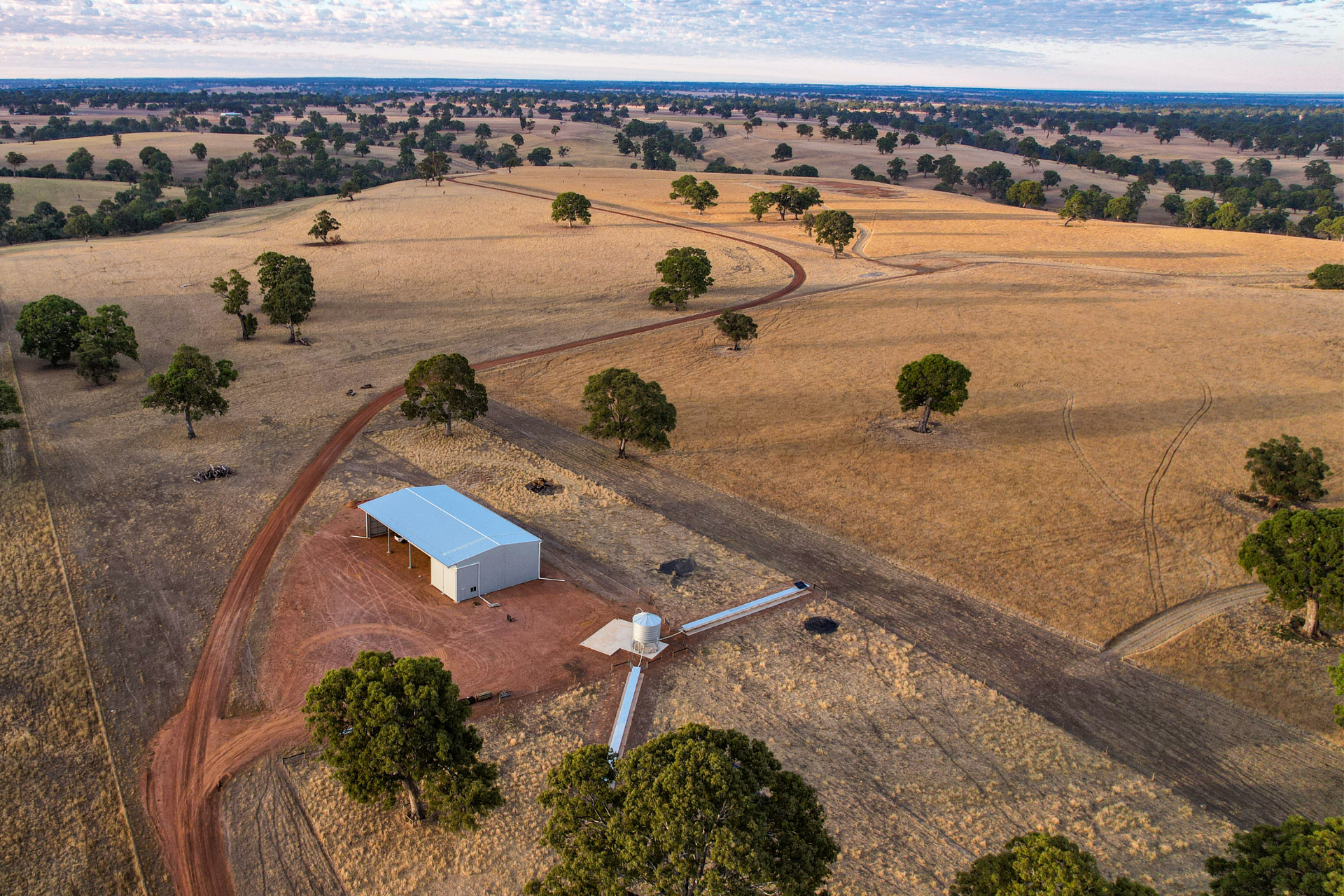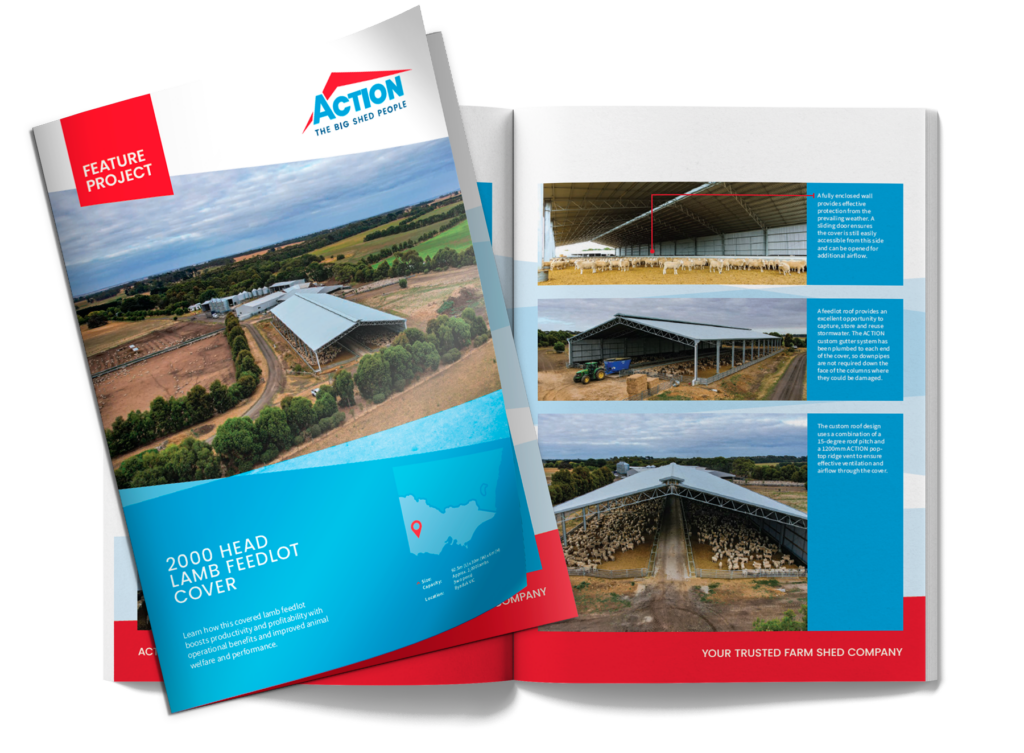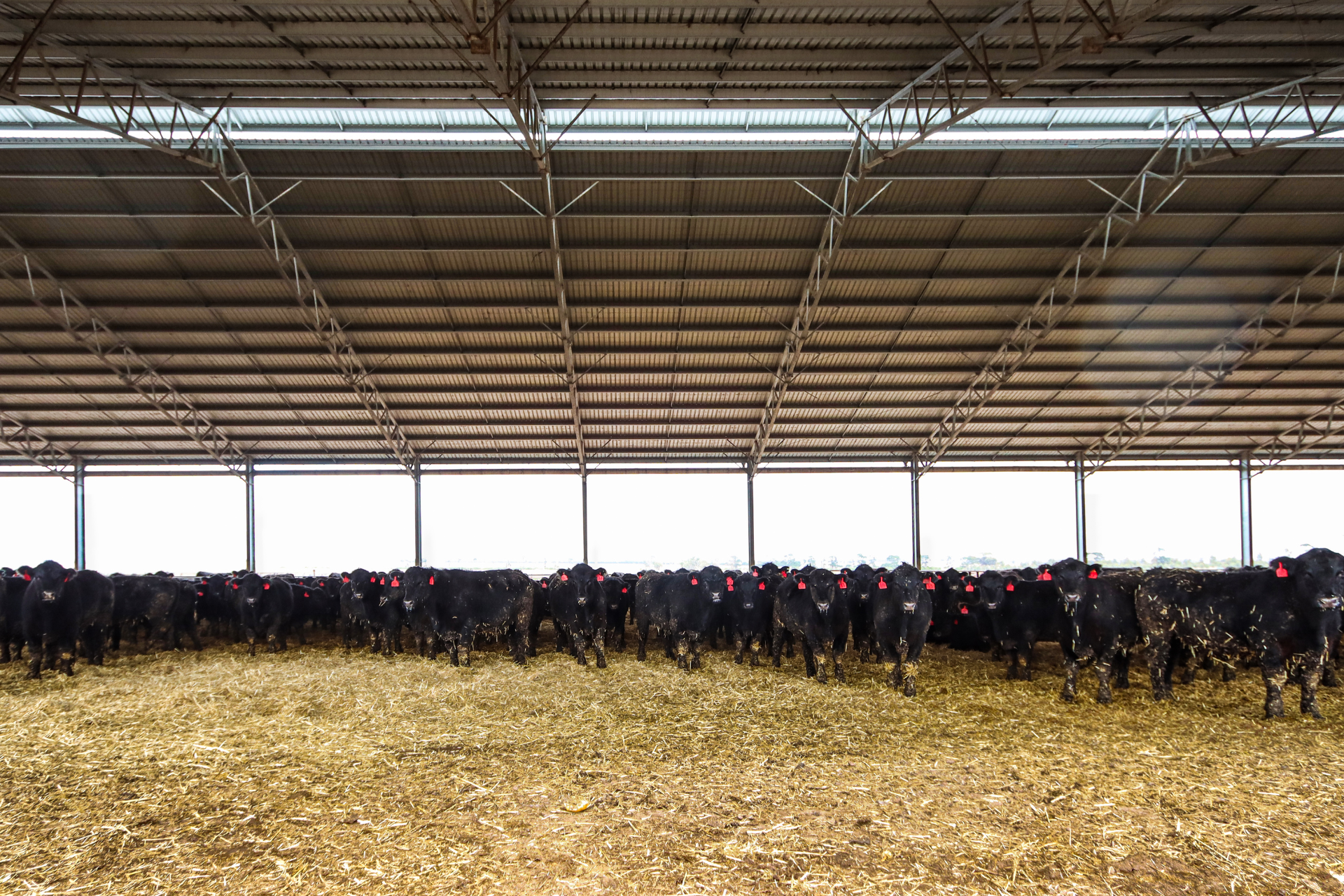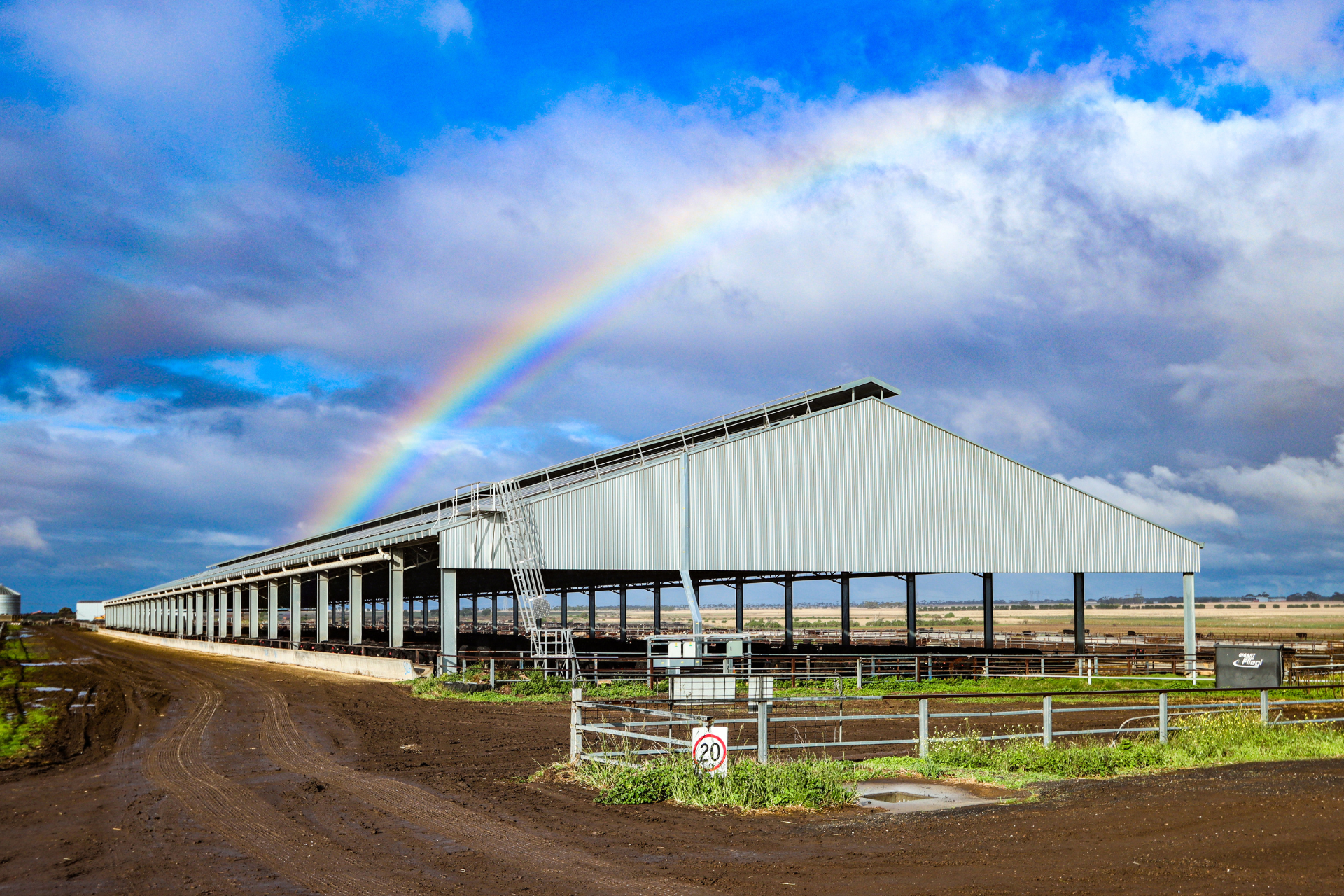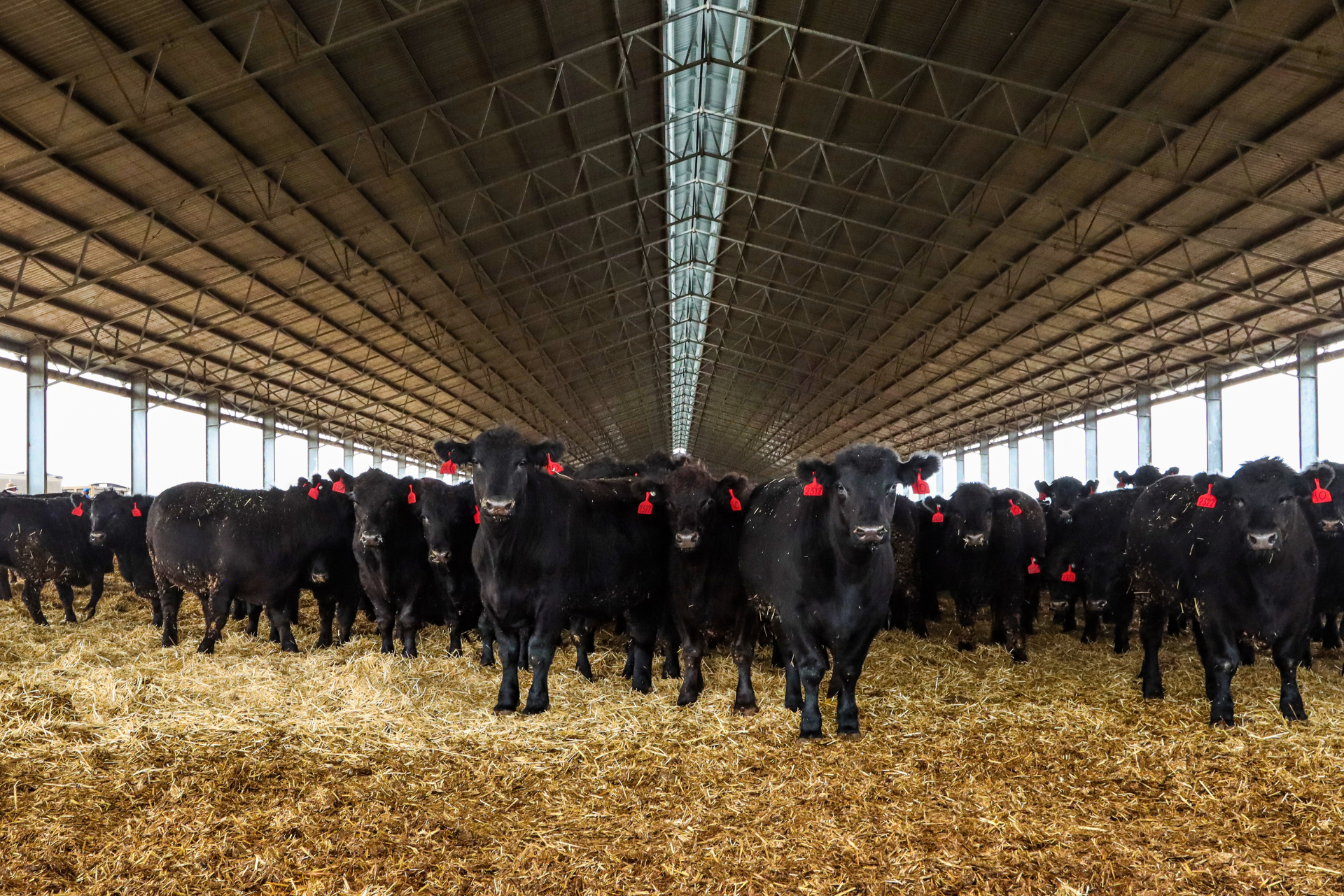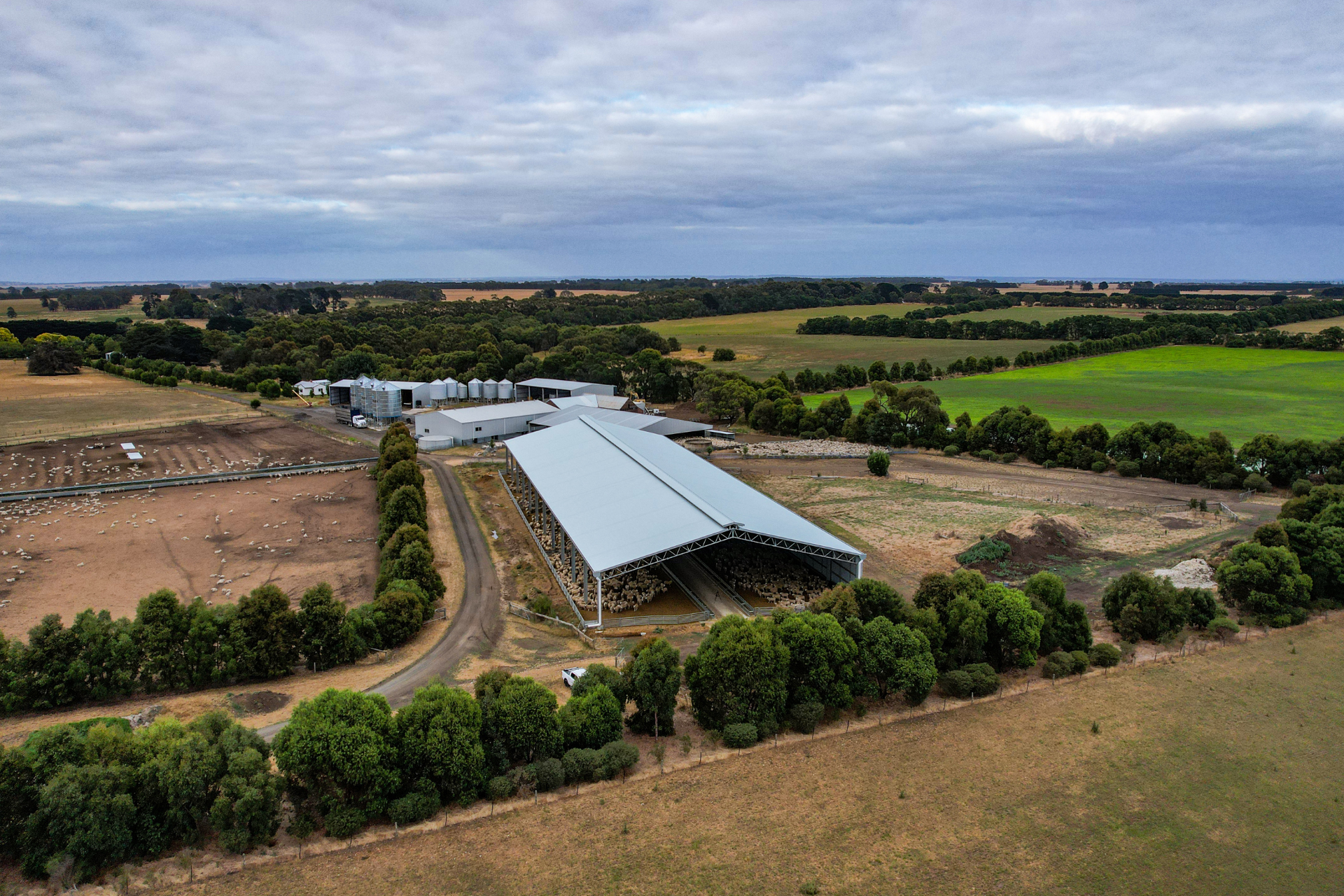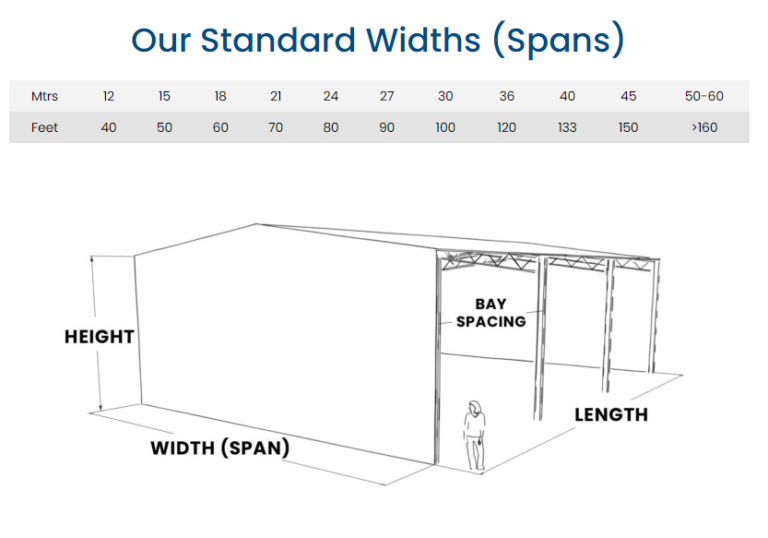Containment feeding. Drought lots. Sacrificial paddocks. Lamb feedlot setups have become more common in recent years, being used to manage pasture and sheep condition in dry seasons.
This has allowed farmers to make smart, confident decisions around whether to sell or feed sheep, relieving pressure and stress – and helping livestock enterprises recover faster.
But are these systems being used to their full potential?
The benefits of lamb feedlots extend beyond being a drought management strategy.
And this has been proved by producers who have used their containment feeding infrastructure for production feeding – optimizing lamb growth to achieve consistent gains and meet target weights earlier.
This means a lamb feedlot can give you a competitive edge, allow you to capitalise on market opportunities and ultimately increase your profitability.
So, in this article we discuss:
- What Is Containment Feeding For Sheep? What Are Lamb Feedlots?
- What Are The Advantages & Disadvantages?
- Is A Lot Feeding System For Sheep Viable?
- Should You Cover Your Lamb Feedlot? How Much Does It Cost?
And we wrap up with best-practice design advice, examples and useful industry resources.
Let’s take a deep dive into containment feeding and lamb feedlots!
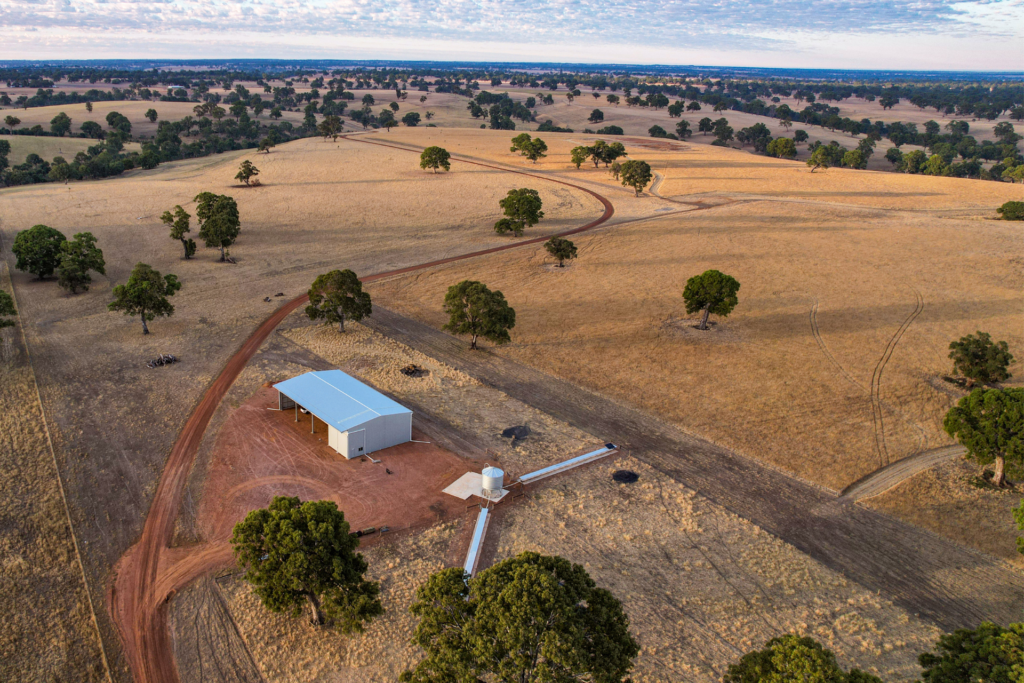
What Is Containment Feeding For Sheep? What Are Lamb Feedlots?
Containment feeding (also known as confinement feeding or lot feeding) are fenced or contained areas where sheep are kept and fed.
This can be achieved with sacrificial paddocks, drought lots or containment pens.
Contained areas protect soil and pasture, make feeding out less labour intensive and make it easier to meet energy requirements for your flock.
These are the main reasons why containment feeding is implemented as a drought management strategy.
Lamb feedlots apply the same principles such as a contained area but are typically used for production feeding or an intensive finishing system.
As we mentioned earlier, many lamb producers with the infrastructure for containment feeding are looking to take advantage of this year-in year-out by converting to a lamb feedlot for production feeding or finishing.
As well as providing benefits such as consistent growth rates and faster finishing, this is also a smart way to improve return-on-investment and capitalise on other benefits such as ease of management.
Read on for an overview of the benefits of containment feeding and lotfeeding sheep.
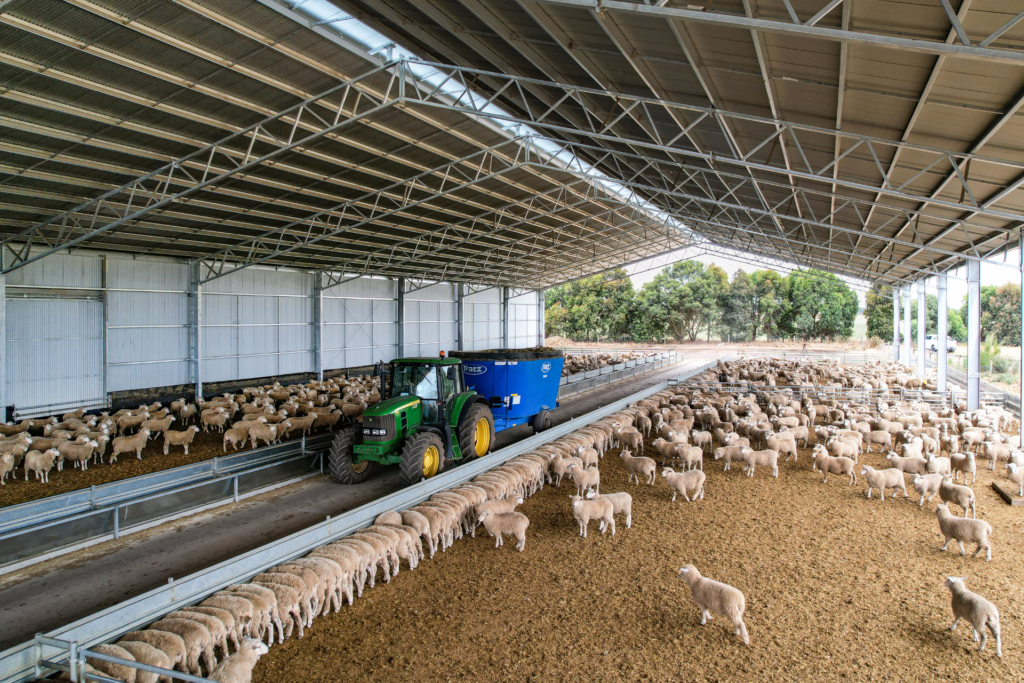
What Are The Advantages Of Containment Feeding?
Here are five of the reasons why containment feeding and lamb feedlot systems work.
1
Increases Feed Efficiency & Productivity
In a containment area, lambs use less energy on simply surviving and can channel their energy into growth – particularly if they have been backgrounded.
Backgrounding reduces shy feeders and health issues and improves feed intake by ensuring the sheep are adjusted to the contained environment.
In contrast, grazing sheep with limited pasture often have to walk long distances which increases their energy requirements.
As well as increasing productivity, the low-stress, controlled environment of a containment area can increase feed efficiency and conversion (FCE) which lowers costs. This system also saves you money by preserving pasture and using rations means you don’t have to feed out expensive hay.
2
Opens Up Market Opportunities
A containment area gives you greater control over the nutrition you can deliver and makes it easier to manage your livestock.
This – along with increased feed efficiency – helps deliver results including higher average daily weight gain, faster finishing and consistent carcase weights.
For example, lambs in this recently completed lamb feedlot shed, gain an additional 150 grams per day in the winter months.
The consistency benefits both you and the buyer and opens up market opportunities such as locking in forward contracts for guaranteed income.
And with faster finishing you can turn more sheep off in a year, which ultimately means more money in your pocket.
3
Improve Labour Efficiency & Reduces Running Costs
A containment area or lamb feedlot is less labour-intensive than feeding out in paddocks or travelling between farms – particularly if you are grazing large paddocks to meet nutritional and energy requirements.
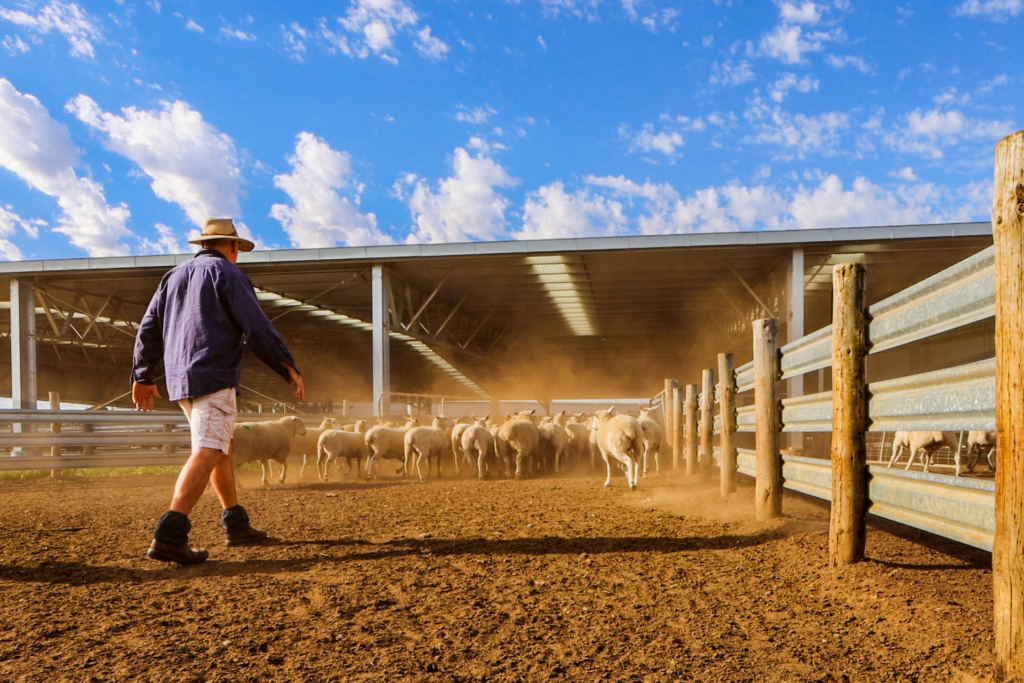
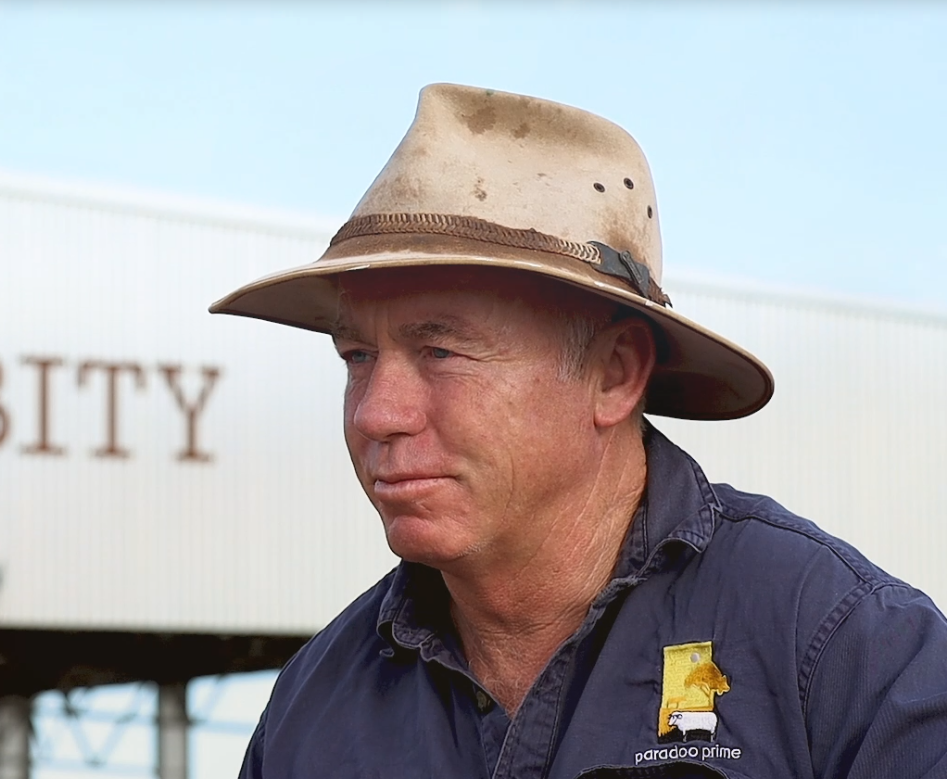
Plus, grazing large paddocks makes flock supervision harder, which leads to our next point.
4
Easier Animal Health & Welfare Management
It is much easier to monitor and manage your sheep in a contained area, particularly for vulnerable sheep such as lambing ewes.
This means you can identify extra nutritional needs or health issues faster and deliver timely care – which helps prevent health issues from escalating or spreading.
While a containment area can present some health challenges, these can be mitigated by effective implementation strategies such as backgrounding.
5
Build Resilience & Recover Faster
Arguably one of the most significant benefits of containment feeding for sheep is the improved pasture management during drought.
Feeding sheep in containment areas helps prevent overgrazing, improves pasture survival during drought and helps pasture recover faster after drought.
This reduces pasture re-establishment costs, helps prevent the spread of weeds from purchased fodder and allows you to be more strategic when managing both your pasture and flock. For example, contained feeding can allow you to build a feed wedge for ewes prior to lambing.
And it’s not just pasture management where containment feeding provides benefits during drought.
Having the infrastructure and system set up allows you to make better decisions around whether to buy, sell or keep livestock.
For example, if you can maintain a productive and profitable flock this will help you generate cash flow. Or you will have the livestock available for sale when conditions recover, and prices rise. And it can assist in maintaining a core breeder and genetic base.
The improvements to both pasture management and flock management will help you build resilience and set you up for faster recovery.
So, that’s really just a snapshot of some of the key benefits implementing this system can provide. Here is a recent article that covers the advantages in more detail – BIGG Benefits Of Containment Feeding
Next, we look at some potential downsides to lamb feedlots and containment feeding.
What Are The Disadvantage Of Containment Feeding For Sheep?
Like any system, contained feeding is not without its drawbacks, which is why thorough planning, implementation and effective management is essential.
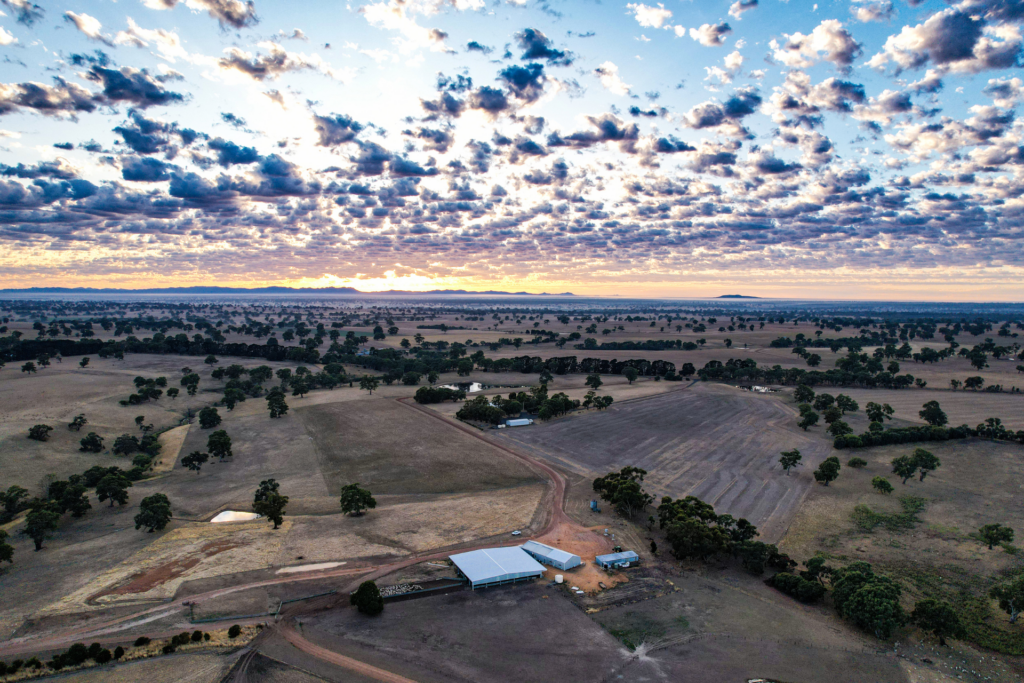
Done right and the advantages will outweigh the disadvantages.
These disadvantages include health risks such as summer pneumonia caused by dusty conditions, the challenge of shy feeders and the initial financial outlay.
Management strategies include designing the facility to prevent dusty conditions, such as installing shade and a layout that allows easy health monitoring.
Backgrounding is the recommended way to introduce or initiate your sheep to a containment area and help prevent shy feeders. You can learn about this here.
And knowing the numbers can help you weigh up whether a containment area or lamb feedlot system is financially viable – we cover this next.
Knowing The Numbers – Is Lot Feeding or A Finishing System Viable?
Whether you are implementing containment feeding as a drought management strategy or a lamb feedlot for as a finishing system, it is important to know the numbers.
In the case of a drought management strategy, knowing the numbers can help you make good decisions in stressful situations – and give you the confidence that you are making the right decision. Do you sell livestock or keep feeding?
For producers feeding and finishing lambs in an intensive system such as a feedlot, profit is everything. Is the system viable? What is the return? How quickly does the infrastructure pay for itself?
Factors that influence the profitability of a lamb feedlot system include:
- Price margin (buy in prices versus sale price of lambs)
- Ration cost (cost of feed)
- Growth rate (grams gained per day). A rule of thumb is that lambs need to gain > 300 grams a day to be profitable. This is the main factor used to determine profitability.
- Feed conversion ration (FCR, the amount of feed eater per kilogram of live weight gain)
- Time on feed (time lambs spend in the system – an important consideration when feed costs are high) this will depend on details like entry weight, target weight and growth rates.
- Number of mortalities or shy feeders
There are a number of things you can do to measure and improve profitability of your systems and mitigate risk. This includes having a clear budget, nurturing supply chain relationships and securing forward contracts.
For example, you budget should cover both cost per head and returns per head.
And you could aim to secure forward contracts for the minimum amount of lambs that need to be sold to cover COP (cost of production)
The MLA Production Feeding For Lamb Growth Guide (which you can download here) provides a handy summary of what to include and an example of a what a budget could look like –

What Else Do You Need To Know?
Here’s a round up of useful articles and resources:
- Managing out of season sheep nutrition
- Building drought resilience with Cam Nicholson
- Why should I build a containment area?
- How do I choose a location for a containment area?
- How to manage sheep in a containment area?
- How to make the transition out of a containment area?
- Sheep Drought Feeding Guide (PDF)
- Stock Containment Areas – More Than A Drought Measure (PDF)
- Sheep tools and calculators
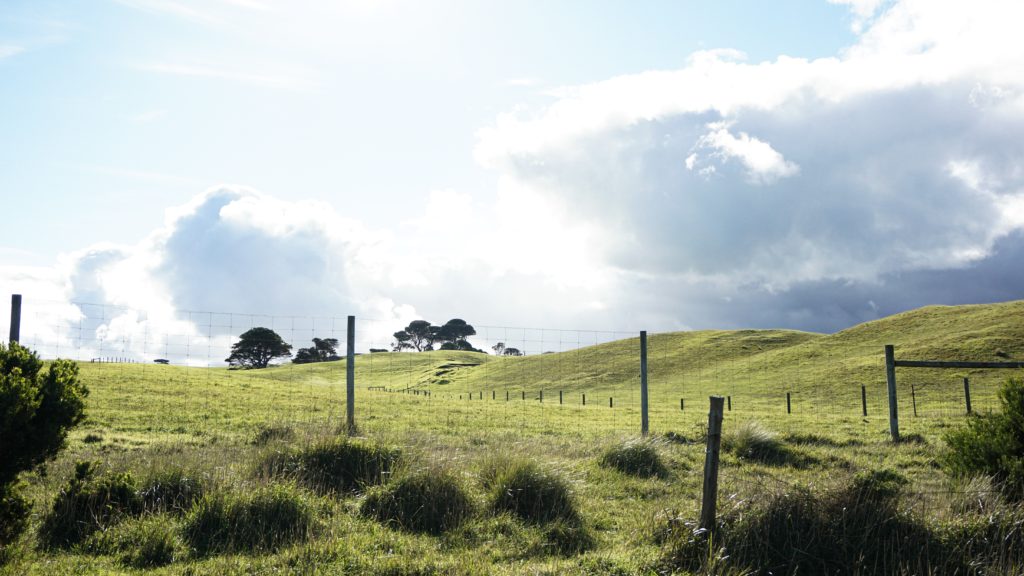
If you have a lamb feedlot or are considering converting your containment feeding to a finishing system we recommend considering the benefits of shade.
So, should you cover your lamb feedlot?
5 Benefits Of Covering Your Lamb Feedlot With A Shed
If you are exploring the idea of putting a roof over your lamb feedlot, here five advantages to consider.
1
Increase Productivity & Profitability
A roof over your lamb feedlot helps boost productivity and profitability in several ways.
Firstly, the shelter improves animal comfort. For example, newly shorn sheep are more prone to heat stress or cold stress and have higher energy maintenance requirements. As a result, sheep under the cover are less stressed and their energy is channeled into growth.
This leads on to consistent carcase weights and faster finishing/quicker turnoff which allows you to increase production and helps secure guaranteed income with forward contracts.
2
Improves Lamb Health
One of the major benefits of lamb feedlot sheds is the overall improvements to lamb health and reduction in treatment costs.
For example, pleurisy, pink eye and summer pneumonia are risks in a contained feeding areas. These conditions are typically caused by hot or cold temperatures, poor nutrition, stress and dusty feed.
A shed will help you address each of these points by providing a consistent, low-stress and comfortable environment year-round – such as reducing dusty conditions
3
Reduces Feed Wastage
As we have already discussed, a containment area improves feed conversion and efficiency – and reduces feed costs.
A feedlot shed takes this a step further by reducing feed wastage by keeping feed troughs out of the prevailing weather.
For example, many of our feedlot shed designs include centre lane feed troughs or cantilevered canopies over the feed bunks.
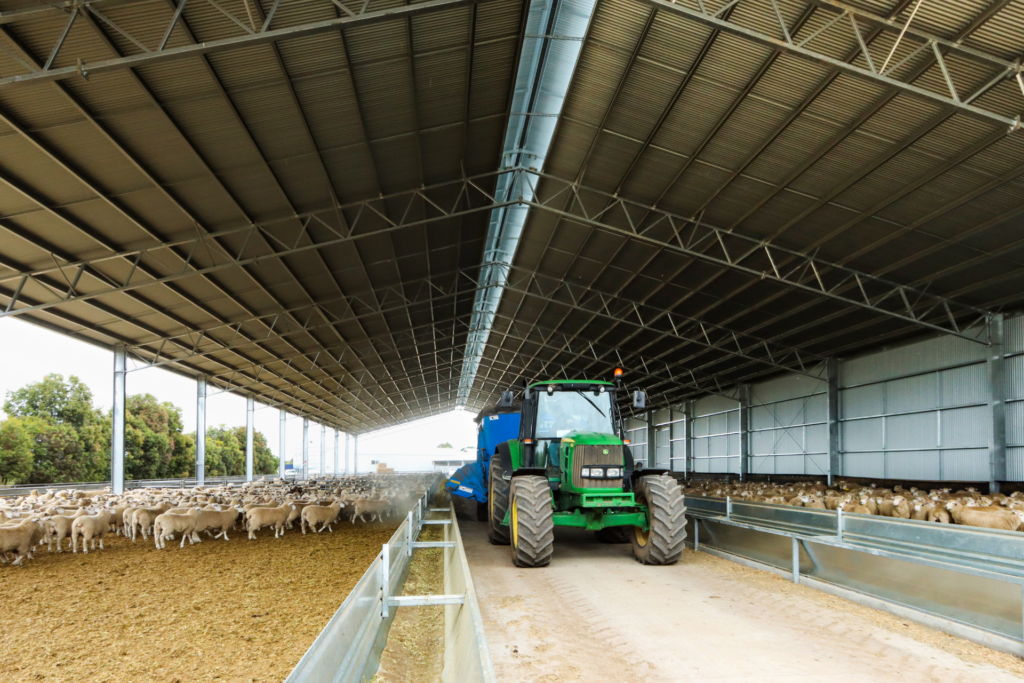
4
Reduce Dirty Fleece Penalties
One benefit of feedlot sheds cited by lamb producers in wet climates is the reduction in penalties from processors.
For example, finishing your lambs in a covered environment keeps fleeces cleaner and helps avoid dirty fleece penalties.
5
Opportunity To Capture Stormwater
Like any farm shed, a cover over your lamb feedlot is an excellent opportunity to capture stormwater run-off. This can be stored and repurposed, reducing costs and contributing to a sustainable operation.
The Action custom gutter is a great fit for this purpose, as it allows down pipes to plumbed to one end of the cover. This helps prevent machinery damage to the downpipes and helps keep moisture out of the pens.
That’s a wrap on five of the benefits a feedlot shed can provide – and these combine to provide some significant results such as profitability gains and cost savings and reductions.
However, it’s important to also consider the cost of this infrastructure, how it fits into your budget and pay off opportunities.
So, read on for a helpful price guide.
How Much Does It Cost To Build A Lamb Feedlot Cover?
As a guide, a lamb feedlot cover can cost from $350,000 to more than $1,000,000 depending on factors like the size, configuration and design inclusions.
Generally, the larger the cover the more cost-effective it is per head and per square metre.
And typically, a longer and narrower configuration is more cost-effective than a wider configuration – however it is important to allow adequate room for a feed lane and coverage over feed bunks.
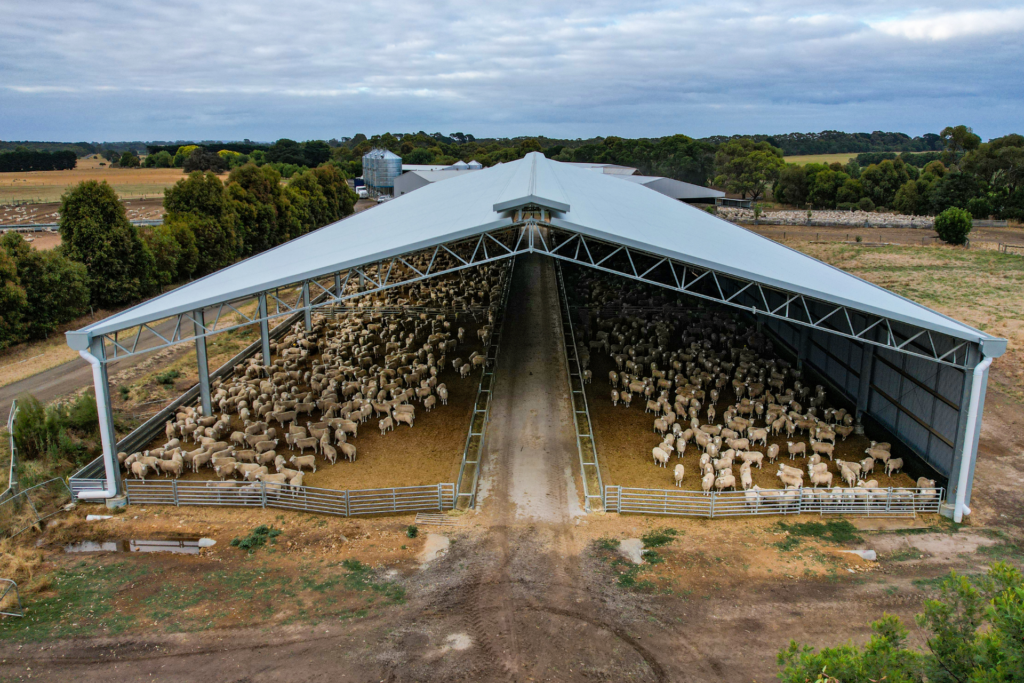
Next up is advice on best-practice designs and some of the questions you should be asking in the planning stages.
Best-Practice Design Consideration Lamb Feedlot Sheds
- Site location – how exposed is the site? Is there good site access? Is it conveniently located?
- Shed orientation – does it allow for effective airflow and shelter?
- Site preparation – is there clear access for installation? Will your feedlot be raised of flat? Is there a slope across the site for water run off? A slope between 2-6% is usually recommended.
- Airflow – does the shed design consider local climate? Does the design use a combination of steep roof pitch and roof ventilation systems?
- Size – does the shed provide adequate area for recommended stocking rates and bunk space? Usually 3-5m² is recommended for head space allocation. The bunk space will depend on the system used such as self-feeders or troughs.
- Stormwater – are you hoping to harvest stormwater off your feedlot shed roof? The Action custom gutter system makes this easy and directs the storm water away from the pens. Try the rainwater catchment calculator here – Farm Shed Calculators
- Animal comfort – is your shed designed to create a low-stress environment? Have you considered formed up columns to eliminate sharp edges?
- Height – what machinery will be accessing the shed? How will you clean out the pens? What clearance height will be required? Does the height provide good airflow?
- Pen sizes – what size will your pens be? Have you allowed for quarantine pens?
- Council permits – do you have the required approvals and accreditation for a feedlot? Have you budgeted for council permits?
Success Story – 2,000 Head Covered Lamb Feedlot
The recently completed lamb feedlot cover at Byaduk in Western Victoria can provide some excellent learnings, particularly when it comes to animal comfort and the impact it has on animal performance.
Size: 92.4m (L) x 30m (W) x 6m (H)
Capacity: Approx. 2000 lambs
Build Date: 2022
Download a copy of the project feature – here – to learn more.
Book A Consultation For Your Lamb Feedlot Project
That’s a wrap on our discussion about lamb feedlots and lamb feedlot sheds, and how they can boost overall business resilience, increase profitability and save you time and money.
For more information on the benefits of shed infrastructure, airflow and roof ventilation research and project specific advice talk with our team on 1800 687 888 – we would love to hear from you.
